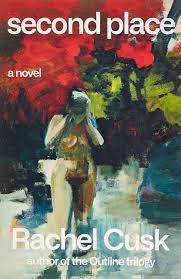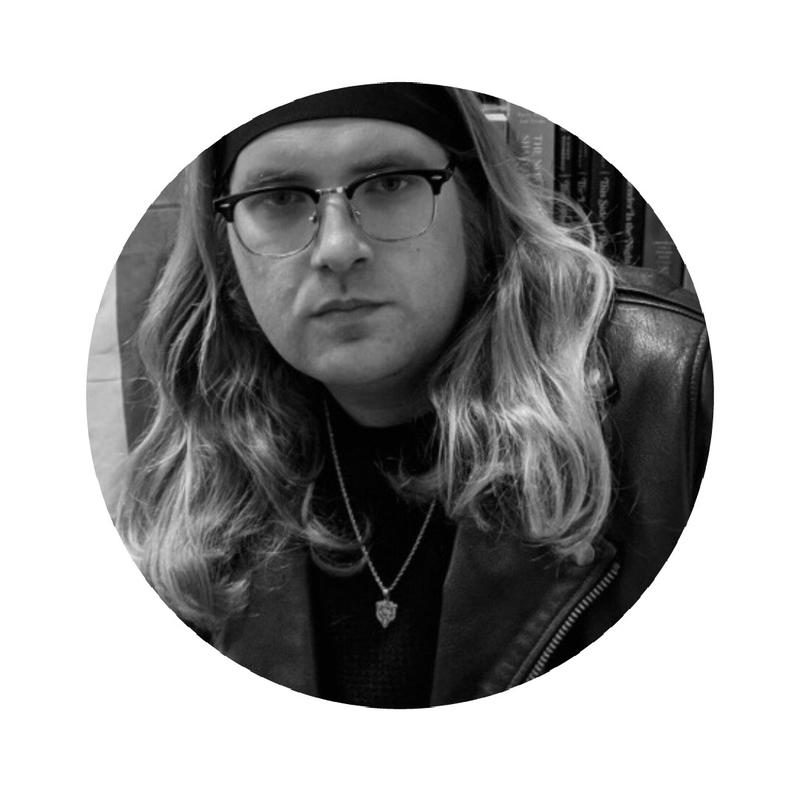by D.W. White
April 23, 2021
D.W. White is a graduate of the M.F.A. Creative Writing program at Otis College in Los Angeles and is currently a Fellow at Stony Brook University's BookEnds program, at work on his first novel. He serves as the Fiction Editor for West Trade Review literary journal, where he also contributes essays and reviews. His short fiction has been published in Tulane Review and Trouvaille Review, and his nonfiction can be found in Chicago Review of Books. A Chicago ex-pat, he has lived in Long Beach, California, for seven years, where he works as a tutor and frequents the beach to hide from writer’s block.
Second Place by Rachel Cusk; Firrar, Strauss, & Giroux; 192 pages; $25
Long known and admired in her native England, Rachel Cusk—the twenty-first century’s most gifted novelist writing in English—began to receive a modicum of overdue recognition in the United States with her Outline series, a trilogy that brilliantly constructs the portrait of a woman through her travels and conversations with others. As a follow-up to this inventive breakthrough, she has, in some respects, formed the opposite, a book just as original yet on entirely different terms. Second Place, her fifteenth book-length work, is a story told not through movement and contrast but with the gravitational pull of a single locale, a novel formed by placing the audience as outsider, the narrative coming to the reader as an overheard aside, dropping in on half a dialogue. While taking its cue from that elder statesman of the form, the epistolary novel, this new work forges ahead by looking back. For all the rule-breaking innovations of Outline, here the language's most talented curator has moved even farther on. This latest work is again an exercise in contrast, but Cusk now compels both world and reader to come to her, feeling their way through a work of swift and unhesitant power.
More so perhaps than Cusk’s other fiction, Second Place is a novel that unfolds, the way a well-attended flower will flourish and bloom, to the reader who is aware of its generative history. The book takes the form of a long discourse given by M—our once-divorced, remarried, and mother-to-one protagonist—to Jeffers, as receptive a listener as one may hope to find in literature. Inspiration for form and content are drawn from a pair of suitably esoteric sources: the forgotten Lorenzo in Taos, a novel loosely comprised of letters written by the New Mexico art patron Mabel Dodge Luhan (loaning, in Cuskian tradition, only her first initial here) to D.H. Lawrence in the early 20th century; and Robinson Jeffers, the self-described ‘inhumanist’ poet of that same era, who lends his name to M’s silent interlocutor. Although only the slightest hints are given towards Jeffers’ identity or occupation, and even less to M’s, the lives and work of these predecessors resonate throughout. From the opening lines, sharp and fine as a sword, Cusk is in complete control and total comfort with her pseudo-epistolary form, beginning with an overture of sorts in medias res, M relating a harrowing and evocative account of a Parisian encounter with the Devil—literally or figuratively depending, perhaps, on the sensibilities of the reader—that alters her life and story. It is a fitting opening to a book that is in many ways Cusk’s most elusive and cunning work.
As with all Cusk’s books, form and content are in perfect harmony in Second Place. The direct address causes the reader to peer in at correspondence of others—here the protagonist and Jeffers—giving the piece an immediate intimacy, a sense that we are privy to those stolen conversations that were made the focal point of Outline. The reader stands apart in necessary judgment, even as the prose simultaneously throws the characters into full relief. This is especially true with M, whose narrative style varies, in line with her desperate personality, from probing psychological insight to destabilizing insecurities about her social skills. Always a master of efficiency, Cusk employs numerous small devices—the most notable, peppering her account with exclamation marks—to simultaneously underscore the epistolary feel and subtly colorize her protagonist. There is, too, a good deal of M’s musings on the making of an artist—thoughts refracted through the prism of L and the clash between his brilliance as a creator and his melancholy as a man, but that one cannot help feel are also places where the author identifies the most with her protagonist. Cusk, in her eleventh novel, is perhaps exorcising the demons of her own artistic calling, reckoning in some way with the price paid for greatness.
Second Place is divided into loose, flowing chapters, and it is the second of these, around twenty pages in, that serves as cipher to the whole. Here Cusk—operating at the logical, captivating extreme of her two-decade penchant for the understated plot—provides a guide to her most mysterious work. It is no accident that her signature and singular prose, unafraid of simile or flourish, first appears after that relatively spartan opening chapter, offering to the shrewd reader a roadmap to the whole. We quickly learn the story—M, some time after the events of the first chapter, seeks out L, a painter of some renown (and sly avatar for Lawrence) whose work had seized her in Paris, cutting through the haze left by her bizarre encounter across the Channel. She writes to him—the necessity of physical letters is never quite pinned down, yet they fit snugly in this distant-yet-familiar fictive world—encouraging his use of a guest house owned by her and her husband, the second place, enmeshed in their alluring tract of English marshland. While the plot unfolds with a typical Cuskian crispness and surety, with perfectly pitched characters brought in to people it, it is this physical place that dominates the work from the background vividly rendered with her best turns of phrase and trademark baroque descriptive clauses. The land on which the second place is built, we are told here and feel throughout, is a pointed reclamation of nature, a rejection of the inane, draining banalities of life. As M continues to navigate her connection with L, making sense of the continuum between art and humanity, the world around them increasingly ebbs towards center stage. Here, the reader is silently told, barriers between the world of human and nature are blurred, come what may.
Perhaps above all else, Second Place is a panegyric to the power and beauty of the English countryside. It stands as tribute to the consuming authority of a homestead, a fitting outgrowth of her admiration for Lawrence, an homage to the brutal physicality of The Rainbow. The lineage from M’s marsh to the Brangwen estate is clear and effective, smartly playing in concentric circles with literary depictions of the English countryside, Robinson Jeffers’ poetic renderings of the California coast, and Cusk’s own occupation with Doge’s letters to Lawrence. As Cusk forms and presents her most poignant treatise on the life of the artist, it is her peerless depiction of place that serves as both frame and exhibit.
There is no other writer alive for whom it is conceivable to have produced Second Place. Not, perhaps, because it is her best—Arlington Park, The Bradshaw Variations, and the Outline trilogy all have better claims to the title—but because it is, in wholly fresh and remarkable manner, another deviation from her extant oeuvre, another masterwork of inventiveness, another stage in the ongoing Cuskian revolution of what the novel can be. Rachel Cusk has built her exceptional career on intelligent innovation in technique; sharp, fearless storylines; and indelible characters, all rendered in pristine, exacting prose. With its inspired epistolary form, vivid, palpable setting, and intricate literary ancestry, Second Place is an impressive addition to her daunting canon.
©2021 West Trade Review
__________________________________________________________________________________________________________________________________________________________________________
__________________________________________________________________________________________________________________________________________________________________________
__________________________________________________________________________________________________________________________________________________________________________
__________________________________________________________________________________________________________________________________________________________________________
__________________________________________________________________________________________________________________________________________________________________________
The Once and Future Form: Rachel Cusk’s Second Place
FICTION REVIEW
Stay Connected to Our Literary Community. Subscribe to Our Newsletter




